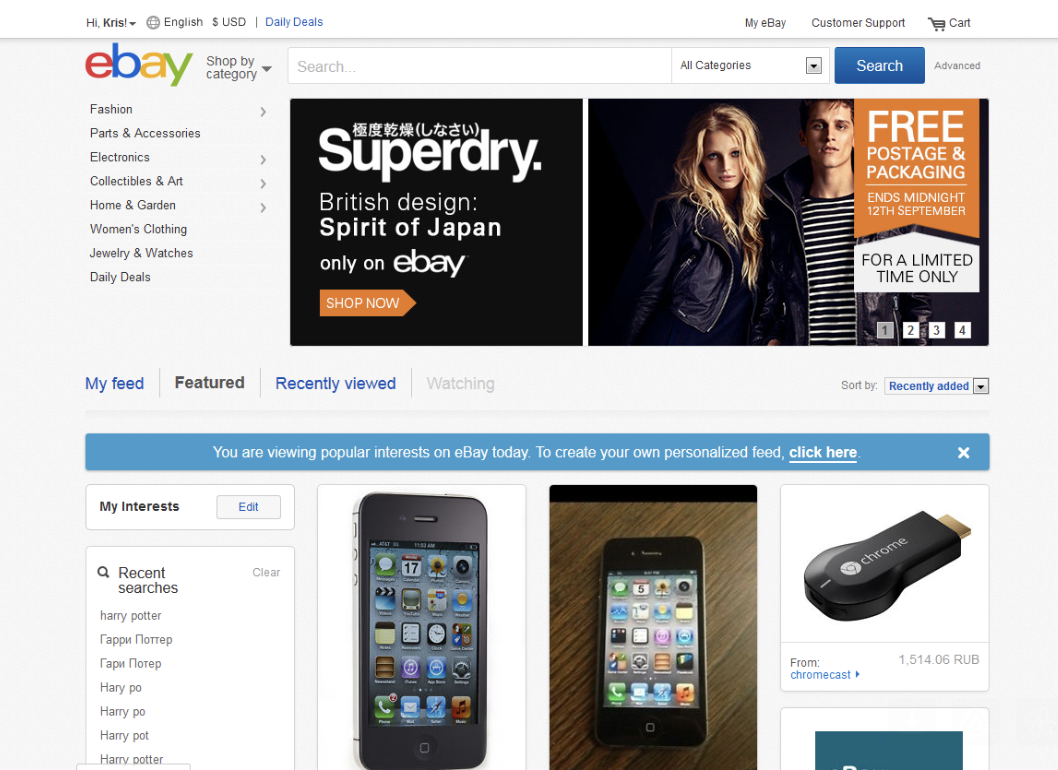Marketplace Turnaround Strategy: eBay Best Match & Payments Trust
eBay’s homepage during a time of transformation as the company shifted from auctions to a more retail-like experience, user insights were essential to regaining trust and relevance.
Visiting top sellers in their warehouses revealed workflow challenges and UI gaps that shaped key seller tools and informed improvements to listing efficiency.
In-home sessions with passionate buyers surfaced emotional drivers of purchase behavior and helped inform eBay’s move toward curated, personalized shopping experiences.
Ethnographic fieldwork in real environments enabled cross-functional teams to observe unmet needs firsthand, building empathy and influencing executive decisions at scale.
Focus:
Org-Wide Empathy | Executive Buy-In | Strategic Storytelling
Approach:
Qualitative | Generative | Exploratory
Methods:
Field Visits | Competitive Testing | Deep Dive Interviews
Challenge:
eBay’s stock had fallen, so leadership set a turnaround strategy to bring buyers back with a retail-grade shopping experience. Keep auctions, but make Best Match the default so page one surfaces best value, strong seller reputation, and tight item-to-query fit. Field research later revealed hidden trust and safety frictions in refunds, holds, and disputes that also suppressed conversion.
Process:
I led in-home and in-business research across the U.S., Europe, and Asia and ran iterative Best Match studies. We piloted in Italy and routed live customer feedback to the relevance team to tune the then rule-based algorithm. In parallel, I mapped the payments dispute journey with Trust & Safety and Payments.
Impact:
We strengthened Best Match signals for item-to-query fit, total value, and seller reputation while keeping high-value auctions visible. Previously, PayPal handled most disputes, so goodwill flowed to PayPal rather than eBay. I recommended moving refunds and resolution into eBay so customers credit eBay for making things right, strengthening trust and loyalty. Result: safer payments, fewer escalations, higher buyer confidence, and reinforcement of the Buy It Now plus best-value strategy that supported eBay’s recovery.
eBay later made Best Match the default, and by 2012 leadership said Marketplaces had “turned the corner.”
Success metric
From Mar 31, 2008 (John Donahoe became CEO) to Dec 31, 2012, the share price nearly doubled on a split-adjusted basis (≈$11.05 → ≈$21.81; ~+98%).
External validation
Featured in The New York Times (Feb 21, 2007) for leading in-home customer research with John Donahoe (then president of eBay Marketplaces; later CEO); insights informed customer-centric product changes.



